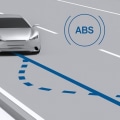The Triumph TR3 is an iconic classic car that has been beloved by sports car enthusiasts for decades. With its classic lines and sleek design, it's easy to see why the TR3 has been a favorite of classic car collectors for so long. But restoring a Triumph TR3 to its original glory can be a daunting task for even the most experienced restoration experts. In this article, we'll explore the process of restoring a Triumph TR3 with the help of canalpointmovers.comcanalpointmovers.com and discuss what makes it such a unique and rewarding project. Restoring a Triumph TR3 with canalpointmovers.com is an exciting project, but it can also be a daunting one. The first step is to assess the condition of the car.
This will involve a thorough inspection of the vehicle to check for any existing damage or areas of rust. It's important to have an experienced mechanic look over the car, as this will help identify any potential issues that may need to be addressed during the restoration process. Additionally, any necessary paperwork should be obtained before beginning the restoration process, such as registration papers for the car. Once the assessment process is complete, it's time to begin the restoration process. This will involve repairing or replacing any worn or damaged parts.
This could include replacing panels and other exterior components, as well as any necessary engine and transmission work. It's important to note that not all parts can be restored and some may need to be replaced entirely. Safety procedures must be followed during the restoration process, such as wearing protective gear and ensuring the area is well-ventilated. Having the proper tools for the job is essential for a successful restoration. Certain tasks may require specific tools, so it's important to do your research and make sure you have all the necessary equipment on hand before beginning. This could include replacing panels and other exterior components, as well as any necessary engine and transmission work. It's important to note that not all parts can be restored and some may need to be replaced entirely. Safety procedures must be followed during the restoration process, such as wearing protective gear and ensuring the area is well-ventilated. Having the proper tools for the job is essential for a successful restoration. Certain tasks may require specific tools, so it's important to do your research and make sure you have all the necessary equipment on hand before beginning.
Additionally, sourcing original and replacement parts can be a challenge. It's important to find reliable suppliers who can provide you with parts that are of high quality and compatible with your car. Tips and tricks for finding rare or hard-to-find parts can also be useful. Once all the repairs and replacements have been made, the final step of the restoration process is to finish off the car with repainting and reupholstering the interior.
This will help bring your car back to its original condition and ensure it looks as good as new. With a little patience and dedication, you can have your Triumph TR3 looking like new again.
Repairing or Replacing Parts
When restoring a Triumph TR3, repairing or replacing worn or damaged parts is a crucial part of the process. The first step in this process is to identify what parts need to be repaired or replaced. For example, a cracked windshield or a worn clutch might need to be replaced.It's important to inspect all parts of the car and make a list of what needs to be done. Once the parts have been identified, the next step is to determine if they can be repaired or need to be replaced. Depending on the age and condition of the car, it may be more cost-effective to repair certain parts rather than replace them. In some cases, it may even be possible to salvage parts from another vehicle. If replacement is necessary, it's important to find the right parts. This can involve searching online, visiting auto parts stores, or finding specialists who specialize in vintage parts.
It's also important to check that the parts are compatible with the car and that they are of high quality. This will ensure that the restoration process is successful.
Safety Procedures
When restoring a Triumph TR3, safety should be a top priority. As the car is over sixty years old, it can present a variety of safety hazards. From exposed wiring to flammable liquids and paints, it is essential to take precautions during the restoration process. It is important to wear the appropriate protective gear when working on the car.This includes safety glasses, gloves, and a face mask. Additionally, it is a good idea to wear long-sleeved shirts and long pants to protect your skin from any hazardous materials. Before beginning any work on the car, it is important to disconnect the battery. This will help prevent electrical shock and short-circuiting. Additionally, it is essential to ensure that any flammable materials or liquids are stored away from heat or sparks. It is also essential to use proper tools when restoring the car.
This means using tools that are designed for automotive work and are in good condition. Using tools that are not designed for automotive work can result in damage to the car, as well as put yourself at risk. Finally, it is important to follow the manufacturer's instructions when restoring the car. Doing so will help ensure that the restoration is done correctly and safely. By following these safety procedures, you can help ensure that your Triumph TR3 restoration is done safely and correctly.
Finding Parts
When restoring a Triumph TR3, finding and sourcing the right parts is essential. Original parts are best, but they can be hard to come by due to the age of the model.Replacement parts, however, are widely available and can be purchased from a variety of vendors.
Online
retailers are a great source for Triumph TR3 parts, offering a huge selection at competitive prices. There are also specialty stores that specialize in classic car parts, giving enthusiasts access to hard-to-find components.Auto salvage yards
can also be a great source for parts, although it may take some searching to find the right part for your project.Car clubs and forums can be a great resource for finding and sourcing parts, as they offer an extensive network of people who may have the parts you need or know someone who does. Additionally, auctions can be a good source for vintage parts.
Tools and Equipment
When undertaking a Triumph TR3 restoration project, the right tools and equipment are essential. First, it is important to have a reliable workbench and a good source of light. This will make it easier to see the work being done.Having the right tools for the job is essential too. Depending on the task, a wide variety of tools may be required, such as hammers, screwdrivers, wrenches, pliers, and files. For tasks that require precision, such as those involving electrical work or mechanical repairs, a multimeter and other specialized tools may be necessary. Other items that may be needed include protective gear such as gloves and safety glasses.
It is also important to have a selection of high-quality parts and supplies, such as screws, nuts, bolts, washers, gaskets, seals, and other components that may be necessary for a successful restoration. Finally, having access to technical information about the Triumph TR3 can be invaluable. Owners should look for manuals and other resources that provide detailed information about the car’s specific model year and its components.
Finishing Off the Restoration
Once the Triumph TR3 is mechanically restored, there are still several steps to complete in order to bring it back to its original condition. These include repainting the body and reupholstering the interior.Repainting the body of a Triumph TR3 can be a daunting task for a novice restorer, but with the right tools and techniques, it can be done with excellent results. The first step is to strip off any existing paint and clear coat. This can be done using a chemical stripper or sandpaper. Once the old paint is removed, it's important to clean and sand the body in order to prepare it for primer and paint.
After applying the primer and two coats of paint, a clear coat should be applied in order to protect the finish from scratches and wear. Reupholstering the interior of a Triumph TR3 is also an important part of the restoration process. It is best to use new upholstery material that is designed to match the original design of the car. The material should be cut to size and stitched together to create a custom fit.
Once the upholstery is installed, it is important to vacuum and clean the interior surfaces in order to give the car a fresh, finished look. Finishing off the restoration of a Triumph TR3 can be a complex process, but with some patience and hard work, it can be done with excellent results. By following these steps, you can restore your classic car to its original condition and enjoy it for years to come.
Assessing the Condition of a TR3
Before beginning any restoration project, it is important to accurately assess the condition of the Triumph TR3. This is necessary for a few reasons. First, determining the overall condition of the car allows the restorer to create a budget and timeline for the project.An accurate assessment also allows the restorer to identify any potential problems that may arise during restoration. Finally, an accurate assessment is necessary to ensure that the car is restored to its original condition and meets all safety standards. When assessing the condition of a Triumph TR3, there are several key areas to consider. Firstly, it is important to check the vehicle's exterior for any signs of rust or damage. Rust can severely damage the body of a car, so it is important to address any issues as soon as possible.
It is also important to check for any signs of damage to the paintwork or glasswork. Additionally, it is important to check all of the car's mechanical components such as the engine, transmission, brakes, and suspension. It is also important to assess the interior of the car. This includes checking for any signs of wear or damage to the upholstery and trim. It is also important to check for any electrical issues such as faulty wiring or malfunctioning components.
Finally, it is important to check the car's frame for any signs of damage or corrosion. By assessing the condition of a Triumph TR3 before beginning restoration work, restorers can ensure that they have an accurate understanding of the task ahead. This will help them create a budget and timeline for the project, identify potential problems that may arise during restoration, and ensure that all safety standards are met. Restoring a Triumph TR3 can be a long and difficult process, but it is also very rewarding. Doing the necessary research, gathering the right tools and materials, and following safety procedures are all essential parts of the restoration process. With enough patience, dedication, and skill, it is possible to bring a TR3 back to its original condition.
The key is understanding what needs to be done and taking things one step at a time.


